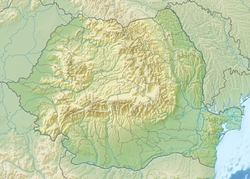Battle
The Dacian army, together with the Roxolani and the Bastarnae, crossed the frozen Danube but, because the weather was not cold enough, the ice broke under their weight, causing many to die in the frozen water.
Trajan moved his army from the mountains, following the Dacians into Moesia. A first battle was fought at night somewhere near the town of Nicopolis, a battle with few casualties on either side and with no crucial result. However, as the Romans received reinforcements, they were able to corner the Dacio-Sarmatian army.
The decisive battle was fought at Adamclisi, a difficult battle for both the Dacians and the Romans. Even though the outcome of the battle was a decisive Roman victory, both sides suffered very heavy casualties.
Aftermath
After the battle, Trajan advanced to Sarmizegetusa, Decebalus requesting a truce. Trajan agreed to the peace offerings. This time the peace was favorable to the Roman Empire: Decebalus must yield the territories occupied by the Roman army, and he must give back to the Romans all the weapons and war machines received after 89, when the Romans under Domitian were forced to pay an annual gift to the Dacians.
Decebalus was obliged to reconsider his foreign policies, and “to have friends and enemies the friends and enemies of the Roman Empire”, as described by Dio Cassius.
After the conquest of Dacia following the 105–106 war, Trajan built the Tropaeum Traiani at Adamclisi in 109, in memory of the battle. On the Tropaeum Traiani monument was a frieze comprising 54 metopes. [3]
This page is based on this
Wikipedia article Text is available under the
CC BY-SA 4.0 license; additional terms may apply.
Images, videos and audio are available under their respective licenses.



